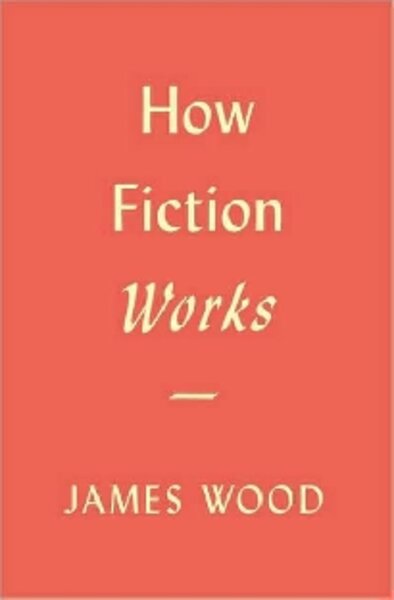"How Fiction Works"
Loading...
In 1858, John Ruskin wrote his “Aspects of Drawing,” a 244-page primer on modern form. Rare among Victorian texts, “Aspects” eschewed grandiose analysis. Instead it stripped art to a series of straight lines, from object (reality) to art (reality translated and then illuminated) – from “technique to the world.”
This last clause belongs to James Wood, and he uses it to launch his own formal inquiry, How Fiction Works. Ruskin, Wood argues, had it right: he cast “a critic’s eye over the business of creation.” His authority came not “from his own technique as a draftsman ... but from what his eye has seen and how well, and his ability to transmit that vision into prose.”
Wood, a staff writer at The New Yorker and former chief literary critic at the Guardian and The New Republic, is often called America’s preeminent literary critic. In “How Fiction Works,” Wood attempts to do for literature what Ruskin did for drawing: distill the messy alchemy of art into a single, coherent system.
And for the most part – through 10 chapters, stacked loosely atop one other, and spilling over at the margins with erudition – he succeeds, spectacularly.
Drawing on his own vast fund of reading, Wood seeks out those moments when novelists come closest to achieving “lifeness” – or at least “the nearest thing to life” – in their art. One of the great pleasures in reading “How Fiction Works” comes from savoring the carefully selected passages that Wood chooses to illustrate his points.
Among these: Henry James letting his adolescent narrator unconsciously parrot the adults around her in “What Maisie Knew” (“It was on account of these things that mamma got [the governess] for such low pay, really for nothing...”; Chekhov describing an adulterer silently eating a melon for a half hour after an assignation; and Tolstoy noting that a husband’s ears suddenly look different to a wife enamoured of another man in “Anna Karenina.”
Wood uses this wonderful romp through some telling moments in Western literature to talk about some of the basic building blocks of the novel: narration, detail, character, metaphor, and style.
If this sounds as if this could all get a bit esoteric, well, best to brace yourself. Wood, who is also a lecturer at Harvard, has in many ways written an academic text, one that traffics in established literary theory and history. (Some section titles, taken at random: “Tragic Dilemmas in the Novel”; “Wordsworth in London”; “Flaubert and Selection.”)
“How Fiction Works” requires at least a familiarity with the “major” Western texts – an ability to differentiate between Stendhal and Flaubert, Dafoe and James, Dostoevsky and Nabokov. Here is Wood, for instance, on "The Brothers Karamazov" “Crime and Punishment”: “Dostoevskian character has at least three layers. On the top layer is the announced motive: Raskolnikov, say, proposes several justifications for his murder of the old woman. The second layer involves unconscious motivation, those strange inversions wherein love turns into hate and guilt expresses itself as poisonous, sickly love.”
An analysis that challenges
Everything in Wood’s sweeping study is layered – presented, dissected, and then collapsed into a wider narrative. The prose is knotty, and unapologetically complex.
There are, to be sure, more accessible books on fiction. Among them: Joyce Carol Oates’s “The Faith of a Writer: Life, Craft, Art,” and David Lodge’s “The Art of Fiction,” which collects essays from the Guardian and The Washington Post and is deservedly popular among aspiring novelists.
But Wood is aiming for something bolder in “How Fiction Works.” Like E.M. Forster in “Aspects of the Novel” or Nabokov in “Lectures on Literature,” he is laying out nothing less than a systemic analysis of the novel – that art form which he calls the “great virtuoso of exceptionalism,” always wriggling “out of the rules thrown around it.”
The messy business of characterization
What really fascinates Wood – and what makes the book hum – is the messy business of characterization: the “thousands of different kinds of people, some round, some flat, some deep, some caricatures, some realistically evoked, some brushed in with the lightest of strokes.”
It’s these characters, Wood argues, that are the “Houdini[s] of that exceptionalism.”
And it’s on these characters that Wood spends most of his time. He examines and refines the “Flaneur” theory of noticing, first mastered by Flaubert and subsequently adopted by nearly every modern novelist, where a character does nothing at all, yet does everything at once, soaking in the world around him in a series of Technicolor snapshots.
He writes about “The Importance of Noticing” in one section and then the “Propaganda of Noticing” in another. In a particularly expert digression, titled “Characterological Relativity,” he traces the novel to its origins “in a secular response to the religious lives and biographies of saints and holy men, and in the tradition inaugurated by the Greek writer Theophrastus.”
Of course, at the risk of being reductive, what Wood is really expressing is his own sort of love for the novelistic form, which seems to have driven not only his career, but also his intellectual life. In the final pages of “How Fiction Works,” after the rhetorical fireworks have subsided, Wood writes that, “[I]n our own reading lives, every day, we come across that blue river of truth, curling somewhere; we encounter scenes and moments and perfectly placed words in fiction and poetry ... which strike us with their truth, which move and sustain us, which shake habit’s house to its foundations.”
The achievement of “How Fiction Works” is to allow Wood’s “blue river” to spill outward from the text, until the writer’s “business of creation” has become our own.
Matt Shaer is a Monitor staff writer based in Brooklyn, N.Y.






